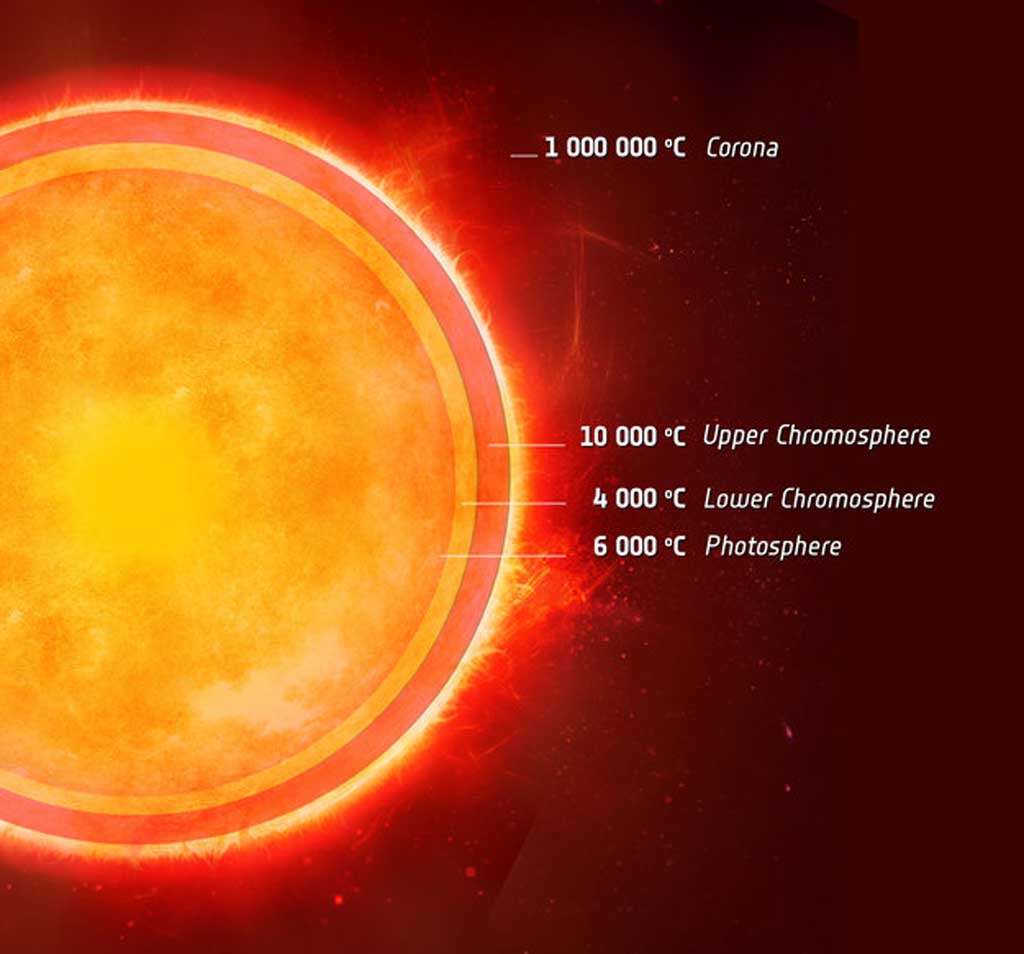The Sun’s nearest neighbors are the three stars of the Alpha Centauri system. The faint red dwarf, Proxima Centauri, is nearest at just 4.24 light-years, with the tight double star, Alpha Centauri AB, slightly farther away at 4.37 light-years.
Alpha Centauri B has recently been in the news after the discovery of an Earth-mass planet in orbit around it, but Alpha Centauri A is also important to astronomers. Almost a twin to the Sun in mass, temperature, chemical composition, and age, Alpha Centauri A provides an ideal natural laboratory to compare other characteristics of the two stars.
One of the great curiosities in solar science is that the Sun’s wispy outer atmosphere — the corona — is heated to millions of degrees while the visible surface of the Sun is “only” about 10,800° Fahrenheit (6000° Celsius). Even stranger, there is a temperature minimum of about 7200° F (4000° C) between the two layers, just a few hundred miles above the visible surface in the part of the Sun’s atmosphere called the chromosphere.
Both layers are visible during a total solar eclipse, when the Moon briefly blocks the bright face of the Sun. The chromosphere is a pink-red ring around the Sun, while the ghostly white plasma streamers of the corona extend out millions of miles.
The heating of the Sun’s atmosphere has been a conundrum for many years, but it is likely to be related to the twisting and snapping of magnetic field lines sending energy rippling through the atmosphere and out into space — possibly in the direction of Earth — as solar storms. Why there is a temperature minimum has also long been of interest to solar scientists.
Now, by observing Alpha Centauri A in far-infrared light with Herschel and comparing the results with computer models of stellar atmospheres, scientists have made the first discovery of an equivalent cool layer in the atmosphere of another star.
“The study of these structures has been limited to the Sun until now, but we clearly see the signature of a similar temperature inversion layer at Alpha Centauri A,” said René Liseau of the Onsala Space Observatory in Sweden. “Detailed observations of this kind for a variety of stars might help us decipher the origin of such layers and the overall atmospheric heating puzzle.”
Understanding the temperature structure of stellar atmospheres also may help scientists determine the presence of dusty planet-forming disks around other stars like the Sun. “Although it is likely only a small effect, a temperature minimum region in other stars could result in us underestimating the amount of dust present in a cold debris disk surrounding it,” said Liseau. “But armed with a more detailed picture of how Alpha Centauri A shines, we can hope to make more accurate detections of the dust in potential planet-bearing systems around other Sun-like stars.”
“These observations are an exciting example of how Herschel can be used to learn more about processes in our own Sun, as well as in other Sun-like stars and the dusty disks that may exist around them,” said Göran Pilbratt from ESA.










